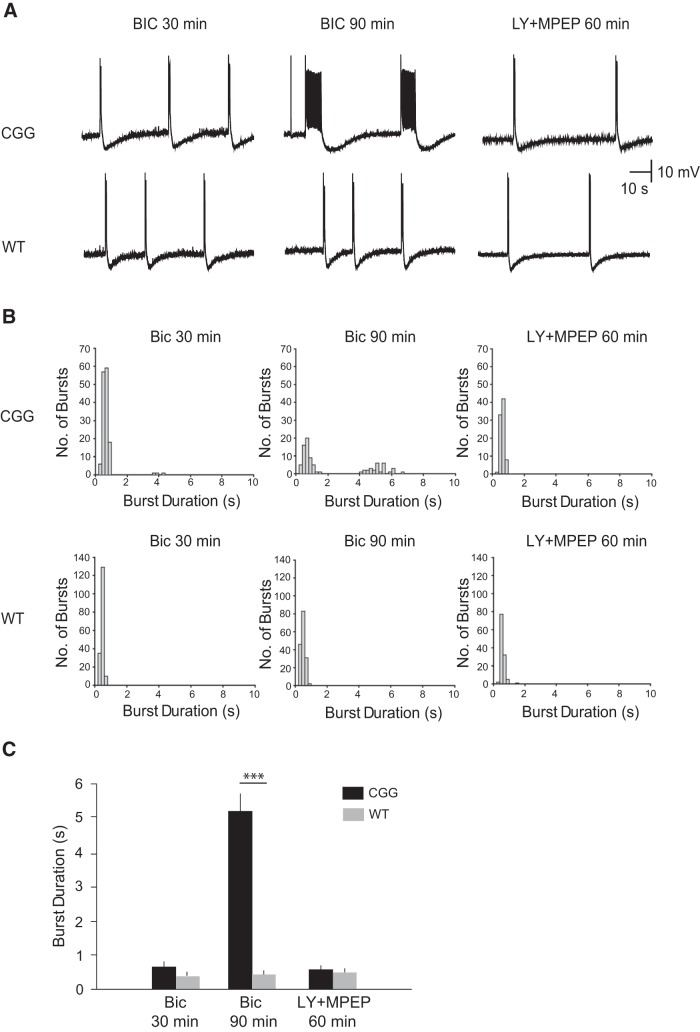Figure 5.
Prolonged epileptiform discharges in CGG CA3 pyramidal cells. The GABAA receptor antagonist bicuculline induced group I mGluR-mediated prolonged epileptiform discharges in CA3 hippocampal pyramidal cells. A, Intracellular recordings of the spontaneous activity of a CA3 pyramidal cell in a CGG hippocampal slice preparation (upper panels) and of a CA3 pyramidal cell in a WT hippocampal slice preparation (lower panels) after perfusion with bicuculline (50 μm). Within 30 min after addition of bicuculline, short synchronized discharges were elicited in both preparations (left). Continuous application of bicuculline induced prolonged synchronized discharges (4–7 s) in CGG animal preparations but not in WT animal preparations (middle). Addition of group I mGluRs antagonists LY367385 and MPEP (80 μm) reversed prolongation of synchronized discharges in CGG animals (right). B, Frequency histograms of all synchronized bursts recorded during a 6-min period of stable rhythmic activity at three time points: Bic 30 min; Bic 90 min; LY367385 + MPEP 60 min. C, Summary bar graph of average burst durations in CGG and WT preparations. The average burst duration in CGG preparations at Bic 90 min was significantly higher than that observed in WT preparations (5.106 ± 0.148 s vs. 0.504 ± 0.01 s; one-way ANOVA, post hoc Tukey HSD test, p < 0.001).

